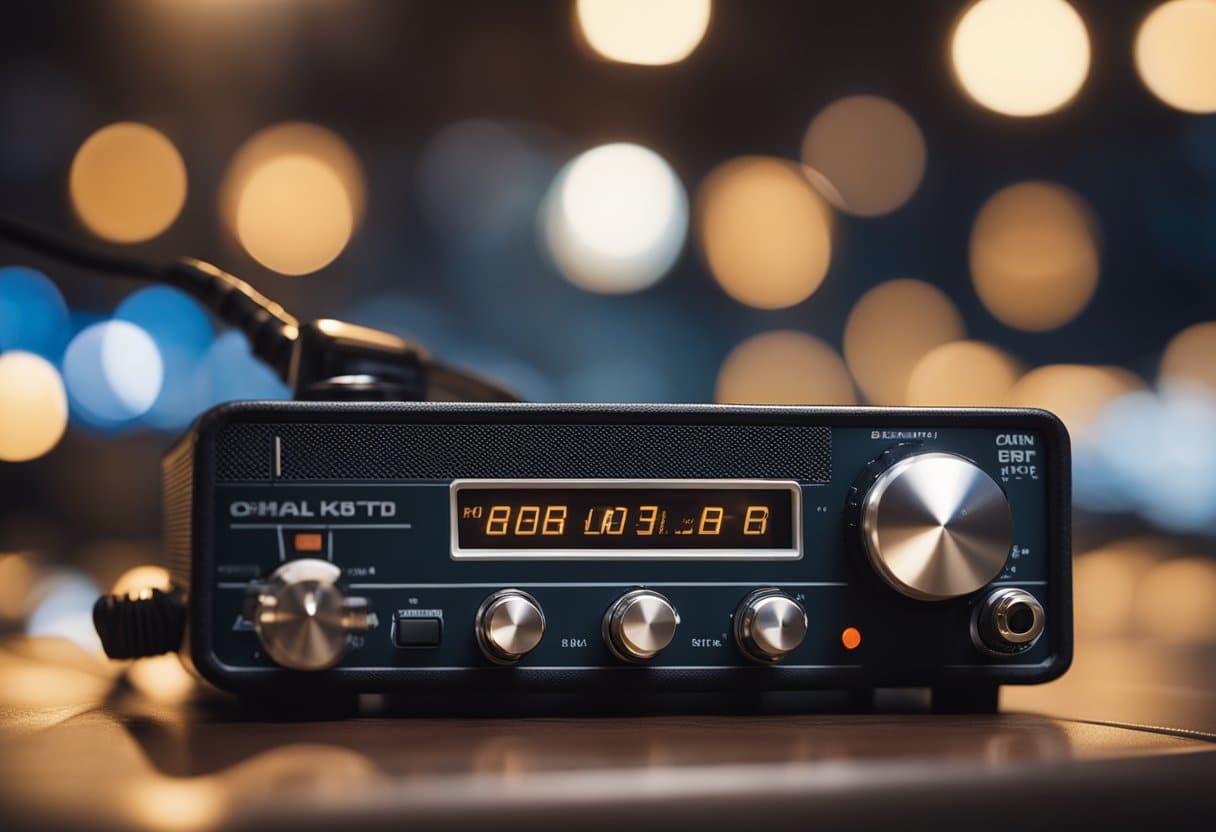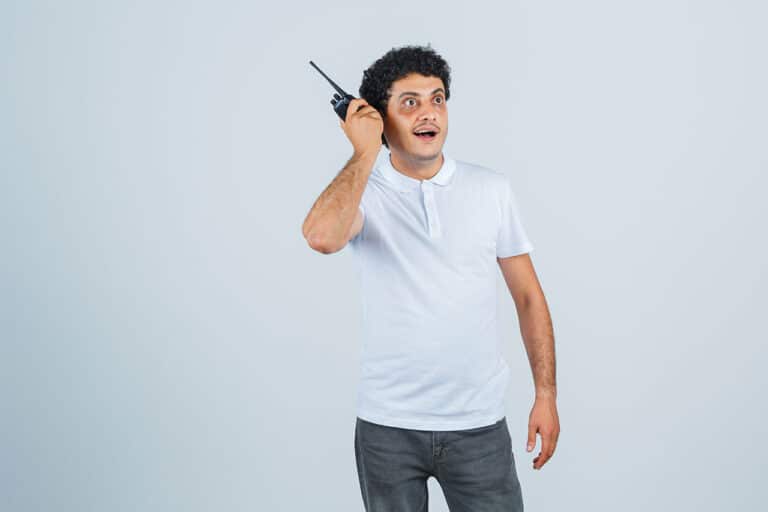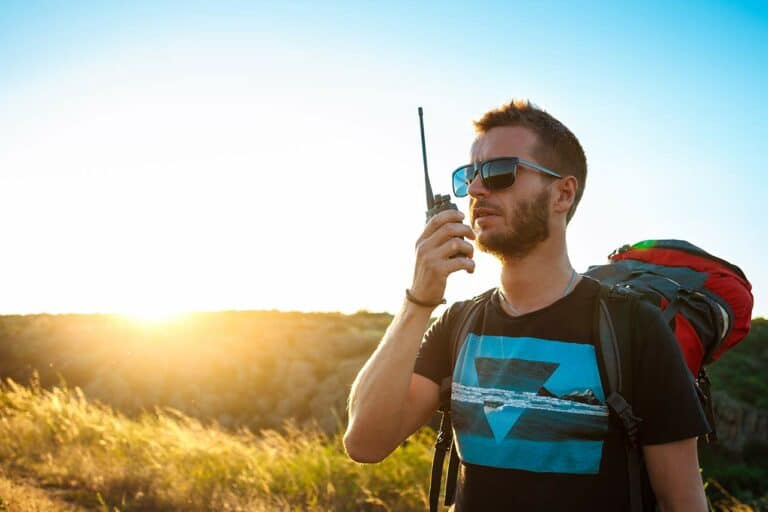How Does A CB Radio Work? (Basics Explained)
CB radios have been around since the 1940s and have since gained popularity among truckers, motorcyclists, hobbyists, and RV drivers. These radios operate on the Citizens Band, which is a collection of 40 channels designated for short-range communication.
While, at first glance, CB radios might seem like an outdated method of communication, they offer unique benefits in situations where modern technology might fall short, such as in the event of a power outage. When the grid goes down, a CB radio can be your most effective device for reaching out to others.
A CB radio system typically consists of a transmitter, receiver, and an antenna. The antenna plays a crucial role as it captures radio-frequency signals and converts them into electrical signals for the receiver, while also sending electrical signals from the transmitter back into radio waves for transmission. This way, you can communicate with other CB radio users within a specific range, keeping you connected even when other modern devices fail.
Technical Aspects of CB Radios
Transmission Frequencies
CB radios operate on 40 shared channels, with each channel having a specific frequency ranging from 26.965 MHz to 27.405 MHz. To avoid interference with other radio services like ham radios, the transmission frequency is kept within a specific range. CB radios are designed for short-range communication, with AM (Amplitude Modulation) being the most common mode used. However, you may also come across some CB equipment that operates on Single Side-Band (SSB) mode for improved performance.
Antenna and Performance
The CB antenna plays a crucial role in determining the performance and range of your radio. The antenna captures radio-frequency signals and converts them to electrical signals for the receiver. When transmitting, the antenna takes electrical signals from the transmitter and converts them into radio-frequency signals. The length of a CB antenna is essential for optimal performance, with longer antennas generally providing better reception. Antenna placement is also important; higher and clearer locations allow for improved signal reach with minimal interference from terrain or structures.
Power and Range
All CB radios have a maximum legal power output of 4 watts, with the main difference between models being their features, not their power capabilities. However, the range of a CB radio can vary significantly depending on several factors. These include the antenna’s installation and quality, atmospheric conditions, and surrounding terrain. On average, CB radios can achieve a range of about 1-5 miles for mobile devices and up to 10-20 miles for base stations. While some users claim to have reached much further ranges, these are rare instances under ideal conditions and proper equipment setup.
Channels and Usage of CB Radios
Channel 9 and Emergency Communication
Channel 9 is a critical part of the CB radio system since it’s reserved for emergency communication. Whenever you encounter an emergency situation or need help from emergency services, this is the go-to channel. This dedicated channel ensures that important messages can be conveyed quickly to those who can provide assistance, without the clutter of casual conversations on other channels.
CB Radio Channels
CB radios have a limited number of channels, with 40 available frequencies ranging from 26.965 to 27.405 MHz. Channels are usually spaced by 10 KHz:
- Single Sideband (SSB) allows for more efficient use of these CB channels as it splits the signal into two sidebands, doubling the number of available channels. This means you can effectively have 80 channels to choose from when using SSB. However, both users need to have SSB-capable radios to communicate on these additional channels.
- For regular AM signals, keep in mind that some of these channels (aside from Channel 9) have commonly agreed-upon purposes, such as:
- Channel 4: Often used by truck drivers
- Channel 10: Popular for road and traffic information
- Channel 13: Frequently used by RV drivers and travelers
- Channel 19: Monitoring road and traffic information
CB Radio Modes and Signals
Now, let’s dive into CB radio modes and signals. CB radios primarily operate using two modes: AM (Amplitude Modulation) and SSB (Single Sideband). Each mode has its own perks and quirks, making them suitable for different situations and user preferences.
AM Mode: This is the most common mode used by CB radio enthusiasts. In AM mode, the radio signal’s amplitude varies with the audio signal, which means it carries both the voice and some background noise. While not providing the clearest communication, AM mode has a wider reach and can be easily picked up by other CB radios.
SSB Mode: Short for Single Sideband, this mode is an alternative to the traditional AM mode. SSB only transmits one sideband (either the upper or lower), which eliminates some of the background noise. As a result, SSB provides a stronger signal, allowing you to communicate over longer distances with better audio quality. However, those on the receiving end need to have an SSB-capable CB radio to tune in to the conversation.
Mounting and Installation
When it comes to the operation of a CB radio, setting it up correctly is crucial. Let’s go through the components, and how they affect how a CB radio works.
Placement of the Radio
The location you choose for mounting the radio plays a pivotal role in its accessibility and safety, especially in an emergency.
Ensuring the installation can remain set-up and functional is essential to it being ready for use when an emergency hits.
Antenna Location Matters
The effectiveness of your CB radio largely depends on the signal strength, which is influenced by the antenna’s placement. Installing it outside at a high point ensures minimal obstructions, maximizing your reception and broadcast range. This elevation helps in clearing obstacles, allowing for clearer communication.
Quality Cables
Connecting your radio to the antenna requires a high-quality coax cable. Why? Because a good cable reduces potential interference and ensures a steady connection. Additionally, routing away from power sources and avoiding sharp bends prolongs the cable’s lifespan and maintains signal integrity.
Understanding SWR
Before you start using your CB radio, grasping the concept of the Standing Wave Ratio (SWR) is essential. A proper SWR reading between 1:1 and 1.5:1 indicates that most of the power sent to the antenna is being radiated out. If it’s outside this range, your radio’s performance could be compromised, and it could even damage your radio. Adjusting the antenna for the best SWR reading ensures efficient and safe operation.
Power Connection
Connecting your radio to a reliable power source is the final step. This might mean a generator in the case of a power outage.
Keep in mind, most CB radios are installed in vehicles, so your vehicle can provide an excellent source of power during an emergency.
While setting up a CB radio might seem straightforward, understanding the reasons behind each step and how they aid in the CB’s function ensures optimal performance and safety.
CB vs Other Personal Radio Services (Comparisons and Alternatives)
Personal radio services offer a gamut of communication possibilities, but the nuances in how they operate can greatly influence their application and performance. Let’s delve deeper into the core mechanics and distinctions among them.
CB Radio
- How it works: CB radios utilize 40 shared channels operating on the AM mode.
- Key Differences: The standout feature of CB radios is the lack of a licensing requirement. They operate at a power level up to 4 watts. However, one unique behavior to be aware of is ‘shooting skip’ or ‘skipping’. In certain atmospheric conditions, CB signals can bounce off the ionosphere, allowing them to travel vast distances, far beyond their typical range.
FRS Radio
- How it works: Designed primarily for short-distance, walkie-talkie type communications, FRS operates on 22 channels, which are shared with GMRS.
- Key Differences: The most notable limitation is its power cap of 0.5 watts, which restricts its communication range typically to less than a mile. This makes it optimal for close-range communications without the need for a license.
GMRS Radio
- How it works: GMRS operates on the same 22 channels as FRS but offers distinct channels with higher power capabilities for longer-range communications.
- Key Differences: With a power potential of up to 50 watts, GMRS can achieve much longer communication ranges than FRS. However, this added power and range come with the stipulation of obtaining an FCC license. This service is ideal for users seeking more extended communication capabilities, acknowledging the licensing commitment.
MURS Radio
- How it works: MURS offers five VHF channels, which are shared with the business band radios.
- Key Differences: MURS finds its sweet spot between FRS and GMRS in terms of power. Operating at up to 2 watts, it provides a reasonable range without necessitating an FCC license. Its VHF operation can sometimes provide clearer signals in specific terrains or conditions compared to UHF radios like GMRS.
The Resilience of Radio Communication
Established in the 1940s, CB radios have proven their mettle as resilient communication tools, especially when modern methods falter during power outages or in remote areas. Their ability to connect individuals across short to medium distances without the need for external networks or infrastructure is testament to their enduring utility.
This makes CB radios an excellent backup communication device to help you weather the storm of a power outage.







